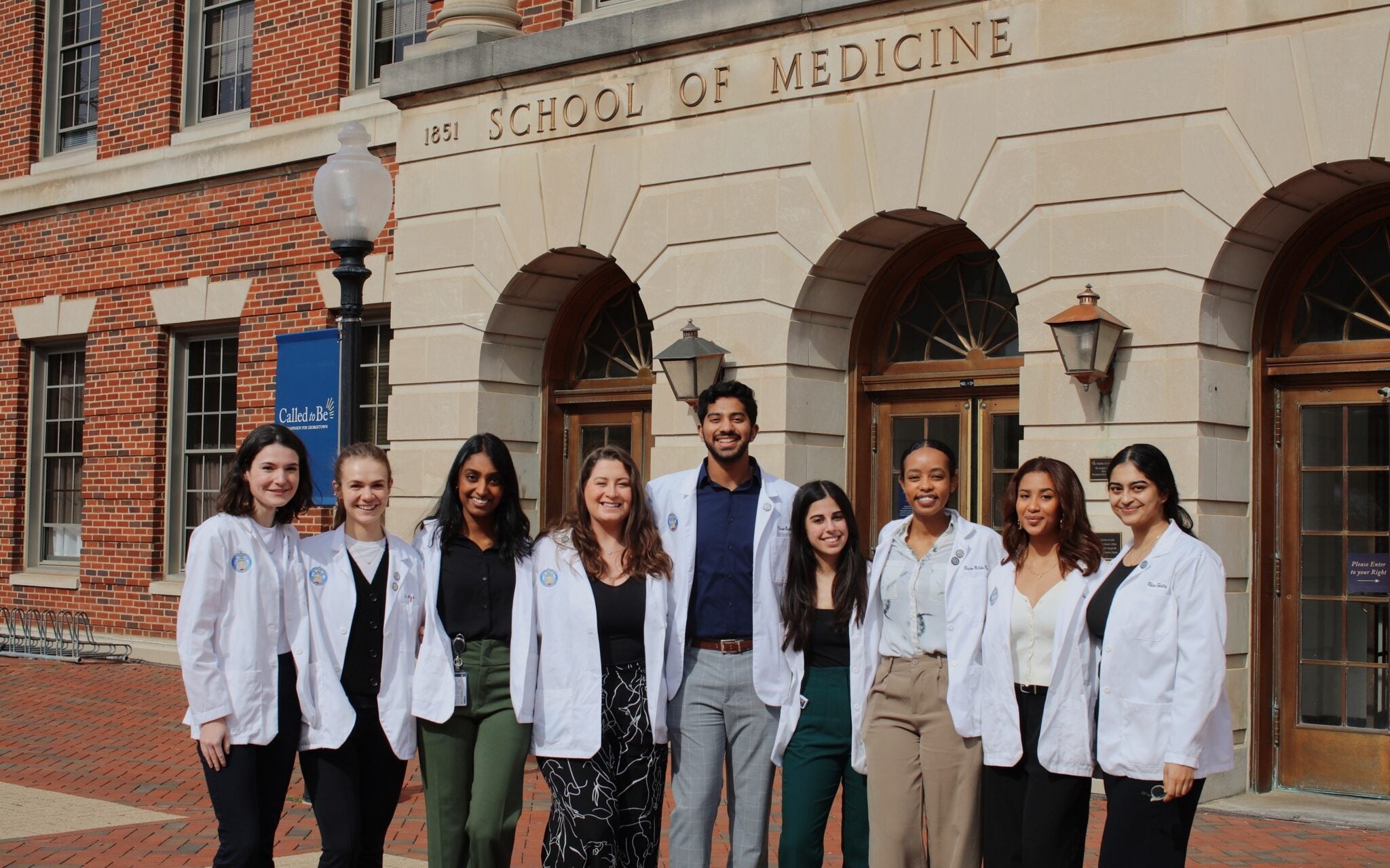In the spring of 2006, the director of the D.C. Village Emergency Family Shelter approached Georgetown Hospital physician Dr. Matthew Levy about expanding healthcare service at the shelter. Dr. Levy found an overwhelming interest among Georgetown University medical students in starting what would become the first student-driven clinic in the District of Columbia.
Throughout the spring and summer of 2006, students researched existing student-driven clinics across the country. In the fall of 2006, around 70 students gathered to decide the clinic’s mission. The HOYA Clinic would serve the needs of underserved homeless families and address the educational objectives of Georgetown students. Ultimately, the group wanted to create a clinic that offered its patients the same level of care they would receive coming to Georgetown University Hospital.
The students began the work of creating a clinic by dividing into subcommittees including Operations, Budget, Fundraising, Education, Insurance/Referral, Laboratory/Pharmacy, Scheduling/Recruitment and Evaluation/Annual Report. These groups then decided the specifics of the clinic. The fundraising subcommittee raised $40,000 for the clinic through events and private donations, and Georgetown University School of Medicine’s Dean, Dr. Stephen Ray Mitchell, matched these funds in 2007. The District of Columbia government, through the Coalition for the Homeless, also provided substantial financial support and renovated several rooms within the DC Village shelter for the HOYA clinic. Additionally, students secured a four-year $30,000 Caring for Community Grant through the Association of American Medical Colleges.
The first six student “clinic coordinators” were chosen to help run the clinic from 2007-2008: Sean Levy, Katie McKenna, Pati Notario, Karla Polk, Pat Tierney and Zach Wallace. The clinic coordinators began their work by compiling contact information for referrals to other healthcare providers, purchasing supplies for the first few months of the clinic, delineating the volunteer training process, and preparing the new clinic site to see patients.
On September 18, 2007 the HOYA Clinic at D.C. Village opened its doors. The clinic offered pediatric services under the direction of Dr. Levy, and was fortunate to find a dedicated partner from Internal Medicine in Dr. Eileen Moore to oversee the care of adult patients. Over the course of the following 6 weeks, Drs. Levy and Moore drove students and a member of the Nurse Magnet Champion Program to DC Village where the clinic provided care for over 75 patients. These volunteers worked together to establish diagnoses and plans for their patients, successfully made referrals, confronted the difficulties their patients experienced in obtaining medications, and participated in high-risk cases like thyroid storm and a new diagnosis of HIV/AIDS.
Due to changes in D.C. government and the closure of D.C. Village, the HOYA Clinic was relocated to D.C. General Hospital, where a temporary family shelter was established. The new site opened December 18, 2007, initially operating on Tuesday nights, and eventually expanding to Wednesday nights as well. During our time at DC general, The HOYA Clinic provided thousands of patient visits. However, in 2016, Mayor Muriel Bowser announced a plan to replace the D.C. General shelter with six smaller facilities located around the city. D.C. General was officially closed by Mayor Bowser on October 30, 2018.
On Tuesday, Sept. 17, 2019, The HOYA Clinic found a new home at The Triumph, a Community of Hope temporary housing facility in Congress Heights in Southeast Washington. At our triumph location, we currently offer basic medical services for shelter residents every Tuesday evenings from 5:30-7:30 pm. In 2021, the HOYA Clinic also began offering care at Catholic Charities Volunteer Medical Clinic on Monroe Street every other Monday from 4:00-7:30 pm. Since our time at DC General our team has also expanded, with Dr. Michelle Roett and Dr. Tobie-Lynn Smith joining Dr. Moore as medical directors and Dr. Adam Visconti joining HOYA Clinic as a volunteer physician at the Monroe Street clinic.

